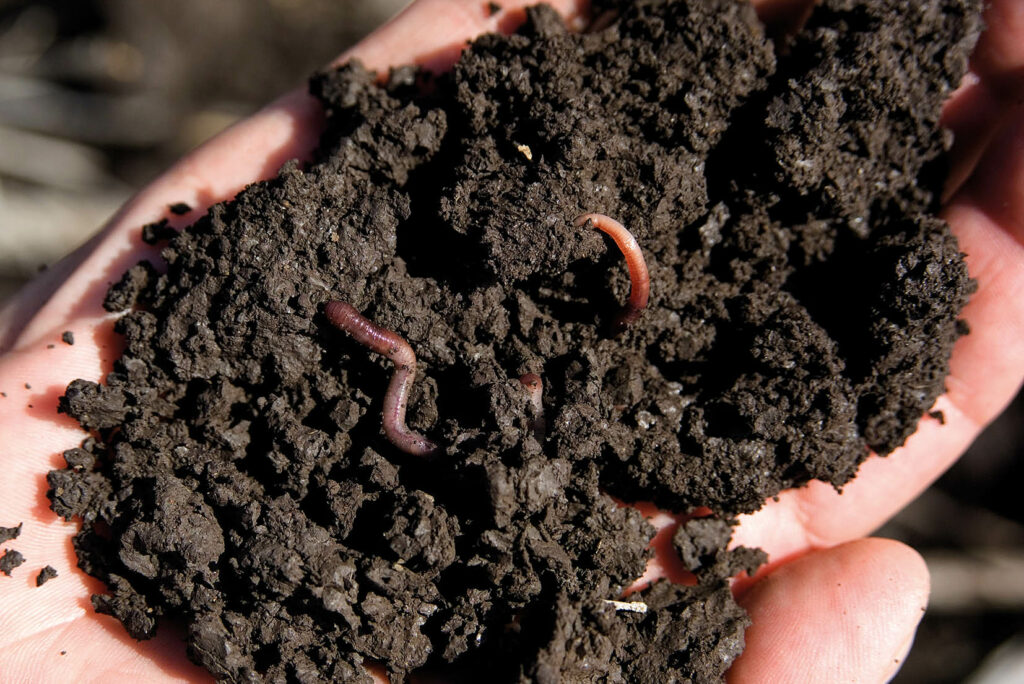Soil health: Transitioning to no-till
28th October 2022
At Groundswell 2022, Dr Jill Clapperton, principal scientist and owner of Rhizoterra Inc, spoke about how to create, measure and maintain healthy, productive soils that produce nutrient-dense food.
Nutrient density and food security
She explained that soil management is everything you do to your ground, pointing out that this means all the inputs, not just the biological and chemical-based ones – it also includes the iron being added to the soil in the form of tillage and general soil disturbance, as well as the effects of livestock grazing above.
The goal is to keep nutrients within the soil, and not have it leach out. “If you don’t have soil, you’ve allowed it to erode, you’ve lost all the life in your soil and all you’re left with is dirt,” Dr Clapperton commented.
She explained how vital it is to stop erosion, with the most effective way to do this by keeping your ground covered, either with stubble or mulch, or using cover crops. She was keen to point out that this doesn’t have to come at the expense of land for commercial crops, explaining: “You can over-sow your pastures, and drill seed crops into green – using your iron for good, rather than for soil destruction.”
What is healthy soil?
The first characteristic of healthy soil is good soil structure. But you cannot have good soil structure without organic matter, bacteria and fungi, predator/ prey interaction and, most importantly, roots.
According to Dr Clapperton: “When plants have access to good soil structure, when they have access through the aggregates, they can build the resources to be able to expend more energy exploring the soil, and form more lateral roots – reducing soil leakage and building the soil.”
She went on to say that when we mix roots in soil with all the soil biota – all the bacteria, fungi, protozoa, microathropods, earthworms, insects and algae – we get:
- Better water infiltration, which leads to cleaner water, and rebuilds the water cycle
- Better root penetration and growth
- Better predator/prey interactions, leading to the recycling of nutrients. Protozoa release 45% of the nitrogen in the soil – leading to financial benefits when you factor in the cost of nitrogen and fertilisers
- More diversity of soil microorganisms and fauna, leading to better soil function
- More decomposition both above and below ground, due to increased roots
- Better plant communication due to greater root networks.
Moreover, the whole system is feeding itself, like a functional community. Soil biota is made up of all the organisms that live within it, including:
- Primary producers – Bacteria, fungi and algae
- Microfauna – Protozoa and nematodes, mites, collembola and enchytraeids
- Macrofauna – Earthworms and insect larvae.
Protozoa and nematodes require good soil structure and larger pores to move and hunt in the soil. Protozoa alone increase N mineralisation by 45% just by grazing, while both nematodes and protozoa concentrate N in the rhizosphere.
For those making a transition into regenerative agriculture, Dr Clapperton stated: “When you first stop undertaking a lot of soil disturbance, the bacteria begin growing like crazy, using up all the micronutrients and locking them away from the crops, with few predatorial organisms to curb them.” So, she explained, when you start your move towards no tillage, you may need extra N, P, K and so on to help you through the transition, until the larger predators like earthworms can multiply in number.
In summary, soil biota drive decomposition, nutrient recycling, concentrate and retain nutrients, and create soil structural stability. But, Dr Clapperton said, we can’t build organic matter quickly enough if we don’t get roots in the ground.
Getting to the root of nutrition
The rhizosphere is the most biologically active part of the soil. It is the roots, the soil attached to the root, and the soil influenced by the roots. The roots and root exudates feed the microbial community, and filling the soil profile with roots is the best and fastest way to increase SOM and the water-holding capacity of the soil, Dr Clapperton explained.
This is where using cover crops and companion crops comes in, and Dr Clapperton stressed the importance of using a diversity of crops, so that roots don’t create too dense an underground canopy – different depths of roots create the balance needed to allow commodity crops to grow through them. Once these roots are established, the rhizosphere should remain as undisturbed as possible.
How much SOM?
Measuring SOM is key, and Dr Clapperton was keen to point out that you should always take measurements of SOM in the same place in order to accurately monitor the improvements, using geolocation services where possible to ensure the location is accurate.
To watch the complete session from Groundswell 2022, visit: www.groundswellag.com
Panel
What is the value of SOM/what is the value of water?
- 100lb of soil with 4–5% OM can hold 1,379–1,630 gallons of water
- 100lb of soil with 1.5–2% OM can only hold 293–376 gallons of water
- 100lb of dry soil is 0.005% of the weight of a one-acre furrow slice (2,000,000lb).
(Source: Walters and Fanzai, 1979)
Dr Clapperton said that while this is old data, it really hits home how SOM affects the capacity of soil to hold water.

